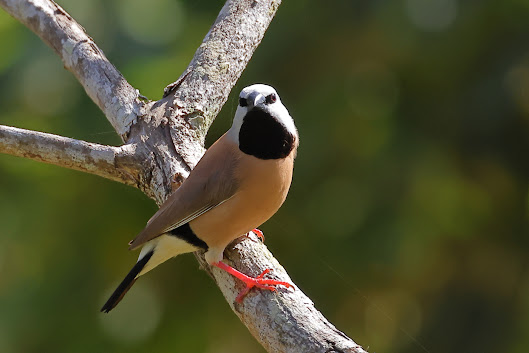
Wee access problem at Tyto today. Bit of water on the track, as you see, after three days of rain (a January of it, in fact). Waded in briefly, but there wasn't too much sense or point to the exercise.
Much of the water will get away rapidly, given a break from more downpours and depending how much is roiling down the Herbert River, just to the north of Ingham and subject nearer outlet to sea surges.
So I settled for a few watery pictures. And since in grumpy mood for want of birding offer a jaundiced view of architecture designed to get 'most bang for the buck'.

The Tyto Info Centre's kite roof and slanting stanchions - at such odds with the otherwise pleasing verticals and horizontals - don't fly with me, though I've nothing against 'industrial-functional' design and materials. (My preference would have been for a huge steel Queenslander: all verandas and stark square simplicity).

The new motel across the road picked up the theme and did a better job, then ruined it all with clashing brick external landscaping! Grumpy bits end there.

Here's a view from the rear of the info centre. Under about one-metre too much water, some of the paperbarks are actually islands within a series of manmade small lagoons, through which a boardwalk will lead to a raised cultural/restaurant complex with extensive southwest views of lagoons and 'savannah' woodlands, to 'old' Tyto's present eastern boundary.
Also tried for a view of the main lagoon from the old shire dump close to sports grounds on the northern boundary. But it started to rain again. Naturally, it stopped right after I'd cycled the 3km back to the caravan park. Oops! No, that's not really a grumpy bit. Nice and dry inside as I post this. See? ;-))))



















































